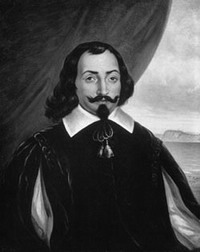Login form
Canadian Literature

Canadian literature developed slowly. Today, however, literature is thriving in Canada. Canadian writers win top literary prizes. Their works are read around the world.
SLOW BEGINNINGS
Canada was ruled by France and then by England. Part of Canada remained French speaking, and part of Canada became English speaking. It took time for Canadians to accept that their literature could follow different paths.
In addition, Canada was vast and thinly settled. Transportation and communication were difficult. Books were rare in isolated regions. Canada's population grew slowly, and so did the country's sense of national identity.
Finally, Canada struggled to find its own voice against the tug of France and Britain in Europe, and the United States to the south. Floods of books from these places discouraged Canadians from developing their own literature.
FINDING ITS IDENTITY
After Canada won independence from Britain in 1867, Canadian literature discovered its own identity and began to thrive. The process continues today.
Canadian-owned publishers opened doors for Canadian authors. Classes taught in schools and universities boosted the importance of Canadian literature. Today, Canadian literature is written in English and French as well as in the languages of other immigrants. Native American writers are also well represented.
CANADIAN LITERATURE IN ENGLISH
In the 1800s, English-language Canadian writers wrote about Canada’s history, settlement, and survival. They wrote about nature and the beautiful Canadian land. Writers also tackled political topics and social issues such as women's rights. Historical romance and poetry gained popularity. Romantic fiction painted a rosy picture of the past. Celebration of the wilderness remained the dominant theme of Canadian writing in English.
City life became more important in Canadian writing of the 1900s, as did the tension between progress and traditional ways of life. Writers also examined social issues, politics, and life in the different regions of Canada. Regional writers often focused on small town life.
Canadian literature in English became more varied in the late 1900s. Canadian writers included Native Americans as well as immigrants from Japan and the Caribbean. Their stories were often of struggle or racism. Some recent Canadian writers have taken a fresh look at historical events.
CANADIAN LITERATURE IN FRENCH
French-speaking Canadians have felt isolated and overshadowed by the larger English-speaking community in Canada. This theme runs through their literature. Literature has helped French Canadians hold on to their French identity, and some writers have pointed out the importance of preserving French Canadian culture. French Canadian writers also have described traditional rural life and how cities threaten this life.
In the second half of the 20th century, modern writers explored urban life in Montréal, a Canadian city where most people speak French. Social issues became hot literary topics. Some 20th-century French Canadian writers also promoted the separation of Québec, a French-speaking province, from the rest of Canada. Like Canadian literature in English, French-language literature was enriched by the arrival of immigrants. They came from Haiti and other French-speaking areas.
Canadian literature, whether in English or in French, slowly found its own voice and identity. Canadian literature continues to build its reputation worldwide.
Source: Microsoft ® Encarta

